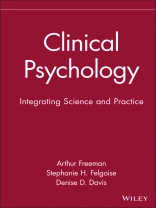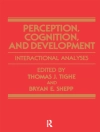An accessible introduction to the field of clinical psychologyfocused on the roles both science and clinical experience play intoday’s evidence-based practice environment
Clinical psychology has been undergoing a revolution–driven byresearch and the need to identify and develop scientifically proveninterventions that improve client care. By the time a studentcompletes his or her graduate work, the field will have evolvedeven more. With the role of clinical psychologists and theenvironment in which they work rapidly evolving, the trainingchallenge has never been so great.
Thorough and realistic in presentation, Clinical Psychology:Integrating Science and Practice helps students gain the tools theyneed to become thoughtful and effective clinicians. This accessiblywritten text provides a foundation of the basics of thepsychotherapy process, grounded in an integration of its science, theory, and, ultimately, practice.
Filled with case examples that illustrate realistic clinicalscenarios, this text offers:
* A detailed look at basic clinical tasks and skills that comprisethe nuts and bolts of a practitioner’s work
* Chapters on research, working with cultural diversity, interviewingand assessment, developing evidence-based treatment plans, practicing ethically, and caring for yourself and colleagues
* A consistent format in each chapter made up of learning objectives;chapter introductions; orienting headings and subheadingsthroughout; figures, tables, and boxes; chapter summaries; andhelpful chapter appendixes
* An online Instructor’s Manual featuring chapter-by-chapter quizzes, essay questions, supporting materials, key words, and Power Pointslides
Clinical Psychology: Integrating Science and Practice paints avivid portrait of the work of the clinical psychologist anduniquely illustrates clinical psychology’s richness and historicalsignificance, as well as its leadership in the scientificdevelopment of methods and techniques for clinical assessment andintervention.
Jadual kandungan
Part I. Introduction.
1. Introduction: The history, politics and social environment ofclinical psychology.
2. The fields of clinical psychology: Professional culture andsubspecialties.
3. Working with cultural diversity.
4. Clinical research and outcome assessment.
Part II. Basic Techniques for Clinicians Assessment Techniques.
5. Why people become clients: Understanding Psychopathology.
6. Introduction to assessment: The biopsychosocial systems modelof human behavior.
7. A scientific approach to assessment and methods of gatheringdata.
8. The logistics of assessment and a closer look at the clinicalinterview.
9. Developing a case conceptualization.
10. Developing a treatment plan: therapeutic alliance andcollaborative goals.
11. Therapeutic methods: building psychotherapy skills.
12. Understanding, facilitating and evaluating change.
13. Impediments to change.
14. Effective Termination.
Part III. What Every Clinician Needs to Know.
15. Self care and ethics: applying the techniques of positivepsychology.
Mengenai Pengarang
Arthur Freeman, Ed D, ABPP, is Visiting Professor at Governors State University and Clinical Psychologist and Director of Trainingat Sheridan Shores in Chicago. He is a Fellow of the APA, APS, andthe Academy of Clinical Psychology. Dr. Freeman is a past presidentof the Association for Behavioral and Cognitive Therapies.
Stephanie H. Felgoise, Ph D, ABPP, is Vice Chair and Associate Professor in the Department of Psychology and Director of the Psy DProgram in Clinical Psychology at Philadelphia College of Osteopathic Medicine. Dr. Felgoise is a licensed psychologist andhas a private clinical practice.
Denise D. Davis, Ph D, is Assistant Professor and Assistant Director of Clinical Training in the Psychology Department at Vanderbilt University in Nashville, Tennessee. Dr. Davis is alicensed psychologist and has a private clinical practice.












